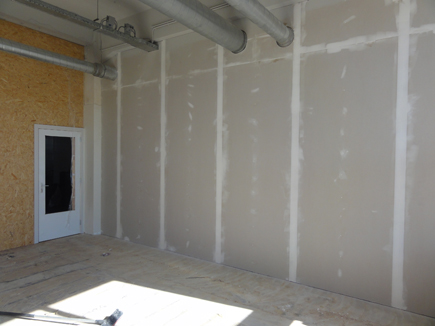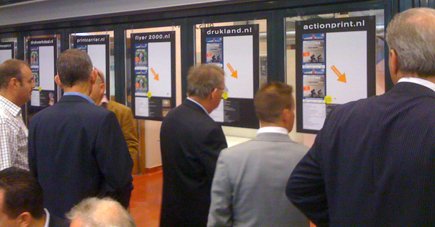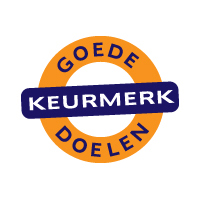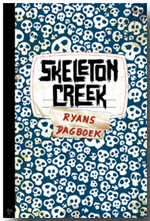New workspace

Come visit us at ‘Het Hoofdkwartier’, the latest creative business complex in the center of The Hague. Designink.nl will share a studio space with collegue Bart Peters (Allplaces.nl).
Het Hoofdkwartier (Buitenom 19)

Come visit us at ‘Het Hoofdkwartier’, the latest creative business complex in the center of The Hague. Designink.nl will share a studio space with collegue Bart Peters (Allplaces.nl).
Het Hoofdkwartier (Buitenom 19)

Yesterday I visited the Print Buyer Market in Leiden. This trade fair of Dutch paper suppliers and printers promised a full program and one prominent headline: The conclusion of ‘The National Printing Test’.
Fifteen Internet(!)Printers were given the job of printing a flyer. To review the results, all flyers were exhibited annotated with pricing, delivery time and other comments (certification, service, etc.).
It soon became clear that the term “conclusion” was premature in character. The audience was asked to determine the winner/looser by means of colored pushpins, what turned out to be a difficult job. Whereas ‘analogue’ professionals seem to opt for quality and craftmanship, consumers are most interested in price and service.

How designers value the apparent contradiction between creativity and accountability.
Design delivers 20% profit on the financial performance of a new product. That is the main conclusion of scientific research project ‘Effectiveness of Design’ presented by the Association of Dutch Designers (BNO) last Wednesday, June 30th.
It’s like falling in love, we all know that it exists, we can localize and describe it visually, but we keep looking for the how, what and why.
OV-campaign team at Station Sloterdijk, Amsterdam.
© Designink.nl | All rights reserved.
Recently, I attended a lecture at the Hollandse Hoogte Photo Agency on “Copyright and Portrait Right” presented by Fulco Blokhuis, lawyer for Boekx (Media & Intellectual Property).
By showing examples in their original context, it became clear which limits exist in the the perpetual battle between copyright holders.

Design: unknown
The brandmarks of the Dutch charity foundations (approximately 20,000) are often characterized by colorful hands, houses, human figures and artistic script letters. This is not the case for the labels that have to ensure the good intentions of these organizations. Recently (May 20, 2010) a new player entered the charitable market, the Hallmark ‘Keurmerk Goede Doelen’. The label resembles a traffic sign that correspond with it’s competitor, CBF. But what exactly is the distinctive character of a label?

Children books can also be great fun for grownups. Especially when it’s a cross-media adventure. After reading the book review of Skeleton Creek (2009) by Patrick Carman at Kidzworld. Anybody ever wish they were twelve again? The conceptual starting point of combining paper and pixels is really exciting. Can’t wait to have a look at the graphic design….
Book design by Cristopher Stengel. Illustrations by Joshua Pease.

Recently i became the victim of creditcard fraud. Luckily, the monitoring service of Visa/Mastercard was vigilant and not much damage was done, but still, what the @#$%^&* !!!! After a brake and enter some years ago i became more careful, but this one i didn’t see coming. After reading T.C. Boyle’s ‘Talk Talk’ (a beautiful and thrilling adventure about identity theft) it was clear to me that online behaviour was extremely vulnerable…but in my own digital backyard?
Recently I happened to stumble upon the Google Labs website and found Public Data Explorer, the updated version of Trendanalyzer© (Hans Rosling, Gapminder Foundation), purchased by Google in 2007.
By means of this tool, it is possible to create a motion graph, just like Hans Rosling did at the TED conference in 2006! The availability of public datasets is still limited and the project is labeled ‘experimental’ (see FAQ).
On display -top of this post- are the World Development Indicators for the subset of Internet use (1990-2008). Surprising in this example is to see China surpass the United States (end of 2007).
Offcourse, one can find other examples of similar web-applications, like the ManyEyes project (IBM) and the SimileProject (MIT). Still, Google has the advantage of being able to reach more ‘eyeballs’. The real big question in this matter is which party is pragmatic or idealistic…
For more information, see these links or survey the following datasets.
Note: if your browser does not support the display of the motion graph (IFrames), please try the original source at Google Labs.
A 3D-printer is a machine by which one can print physical objects. For some time this was possible by means of professional businesses (so called fab-labs). Until recently, now it is possible to build a machine in your own living-room.
Correspondent Jaap Meijers, from daily ‘Trouw’ (saturday, 10th of April, 2010), wrote an interesting article about ‘The printer that prints itself’. See the following url’s;
